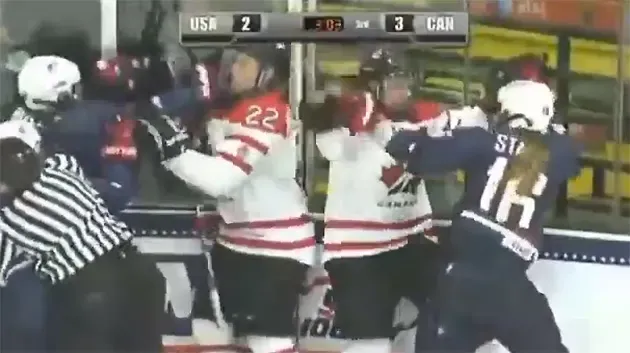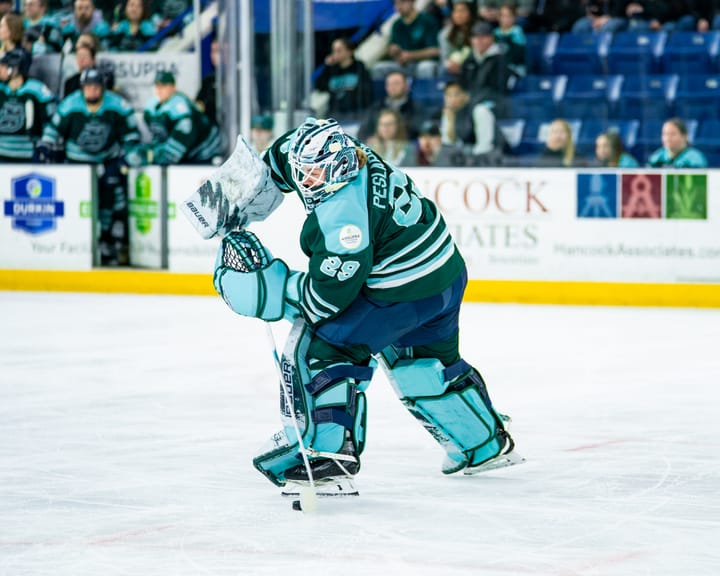Breaking down the NWHL roster expansion
The NWHL is changing how its rosters are structured, eliminating practice players and allowing more players to sign with teams- but what does that mean for the league?
Let’s talk about rosters.
Last week, the NWHL announced a change in how its rosters would be structured for the 2017-18 season.
During the last two seasons, the league had two ‘tiers’ of players:
Rostered players signed contracts for a specific salary that counted against their team’s cap hit. They were expected to attend team practices and games, barring a scheduling conflict.
Practice players only hit the ice for games if a roster player was injured or unable to attend. They didn’t receive a salary, but were instead only paid for the games they played in.
For this upcoming season, the league announced a roster expansion from the previous limit of 17 full roster players to a maximum of 25 roster players, eliminating the practice player position entirely. The expansion idea was credited mainly to new Deputy Commissioner Hayley Moore, who spent the last two seasons as the Boston Pride's GM and saw firsthand what did and didn't work with the previous roster structures.
Per the league’s press release (emphasis our own):
- All NWHL teams may now consist of up to 25 players. As in the past, 17 players will dress for games for each team.
- The option to flex to up to 25 roster spots is available until the last week of the regular season.
- There are no longer “practice players,” as there were in the first two years of the league.
- Every player that signs an NWHL contract will be considered a regular team member of that franchise./
After the initial press release went out, we reached out to the league for comment on how players would be compensated under the new system. Per the league:
“Like the second half of last season, players will be paid per game. The 17 dressed for the game will be paid.”
(After the league announced salary cuts last year, the salaries that players originally signed for essentially went out the window, and players were paid a fraction of what they signed for for each game they participated in).
That’s a pretty dramatic difference from how the league operated in Year One. Rather than receiving a straight salary, players will now receive a paycheck whenever they play in a game- and like years prior, only 17 will dress for games, which means not everyone signed to the roster will play in every game.
There’s more to the expansion news than meets the eye, and though the roster expansion takes a definitive step away from paying its players a “full-time salary,” it’s ultimately something that could benefit the league as a whole.
Player’s perspective
In the league’s press release about the expansion, it mentioned that the decision to expand rosters and get rid of the term “practice player” was a unanimous one among NWHL front office staff and the NWHLPA, including PA Director Anya Battaglino.
Battaglino, who’s in her first full season as the Director of the NWHLPA, said that she spoke with other members of the PA before the PA agreed to the new terms of the roster expansion.
“We have tried to continue communication as well as possible, and as we make major decisions in the league I turn to trusted advisors and former members of the PA for support and a pulse on the player perspective,” said Battaglino in an email to The Ice Garden. “However, between myself and the ‘off-season NWHLPA' we were able to discuss the change and how it might affect rosters. After our conversations it became apparent that growing the rosters and announcing the structure around that was extremely important for our growth and development.”
And for some in the league who may have otherwise been waiting in the wings as practice players, the expansion offers an opportunity to participate more fully as a member of the league.
Because all players will now be recognized as rostered players, they will not only receive compensation for games they play in, but also for practices that they attend.
Previously, said Battaglino, it was just rostered players who were compensated for attending practices, while practice players only got a check if they actually laced up for a game. That had an adverse affect on practices, which then carried over to performances in games.
“With an increased roster it will help mitigate short benches with unfortunate in-season injuries, work conflicts, full practices, etc… it does not take that many conflicts to create light practices which are both stressful and at times ineffective,” said Battaglino. “Now there will be more depth in practice as well as on the bench, creating better games and more development. I know speaking from personal experience with the Whale, some extra players on the ice prepping for the tail end of our season is going to have a massive impact on our ability to perform in playoffs.”
Safety nets
Another concern when the league first announced the changes was what would happen for players who may sustain an injury early on that could keep them off the ice for weeks or months, or potentially an entire season. But per the league, if a player has played in games prior to her injury, she will still be compensated for games she misses as a result of that injury.
It’s not quite clear how that would work for fringe players- if someone plays a handful of games as a 13th forward, and then is hurt, is she compensated for every game she misses, even if she might not have played in all of them anyway?
The change also allows for more Kelsey Koelzer situations- last year, the then-Princeton senior joined the Riveters just days after she played her final college game; she had been drafted by New York the year before. The move was made in an effort to give the Riveters a boost going into the playoffs. Teams will be allowed to ‘flex’ their rosters to the 25-player maximum until the final week of the season, which provides them the opportunity to sign other players late (like returning Olympic athletes, for example).
Money, money, money
Ultimately, we still don't know any of the specific financial details. Player contracts, salary caps, and other budgets haven’t been made public yet, though the league has said they will be made transparent before the season starts.
Also per the NWHL: "All specific details on player salaries will be made transparent just prior to start of regular season."
— The Ice Garden (@TheIceGarden) July 18, 2017
Players know what they’re getting when they sign their contracts, according to the league, but until we know what the players receive, it’s anyone’s guess as to what that is. Without national team players like Amanda Kessel or Hilary Knight commanding higher salaries, it’s possible the league could have saved some money anyway, although there’s more than enough players who have the talent to be making what they would have signed for.
Players attempting to play through an injury for a paycheck is another concern, but it’s one that would be there even without the roster expansion. It’s not a concern that should be lightly dismissed, but neither the league nor Battaglino thought the changes would have an impact on it.
“I don't think it is going to drive players to put themselves in compromising positions with their health because I think we are all focused on putting the best product on the ice," said Battaglino. "I think there is a level of maturity in the NWHL players that will see an opportunity to rest and recover, as opposed to doing further damage."
Ultimately, calling this a win or a loss for the league will probably have to wait until more financial details are made clear. But as of today, former practice players and fringe players have the opportunity to become legitimate members of a team, fully compensated for their time in both games and practices instead of just waiting to fill in for a roster player, and that's good news for the growing league.
“[By] providing every player with a compensation for practice [by eliminating the practice player role] we have taken a large step forward in legitimizing each player’s role,” said Battaglino.





Comments ()